Time, in Memoriam
Maudie
DIRECTED BY AISLING WALSH/2017 (U.S. Theatrical Release)
A Ghost Story
DIRECTED BY DAVID LOWERY/2017

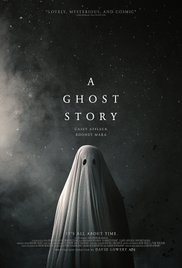 In two consecutive mornings, I saw a pair of films that, on the surface, can’t help but strike one as entirely different. And yet, the similarities are such that I’m opting to forgo the usual single film review format in order to hash them out together. This being an “After the Show” presentation, intended to be read and engaged with after you’ve seen the films, know that plot twists, surprises, endings, final fates, and any other such spoilers are on the table. The table, on this case, is handmade from solid oak, and covered with painted-on flowers.
In two consecutive mornings, I saw a pair of films that, on the surface, can’t help but strike one as entirely different. And yet, the similarities are such that I’m opting to forgo the usual single film review format in order to hash them out together. This being an “After the Show” presentation, intended to be read and engaged with after you’ve seen the films, know that plot twists, surprises, endings, final fates, and any other such spoilers are on the table. The table, on this case, is handmade from solid oak, and covered with painted-on flowers.
Both films are true stories. One is based on things that actually happened, people who really lived. The other, true only in spirit. They are, respectively, director Aisling Walsh’s Maudie, a biopic of folk artist Maud Lewis and director David Lowery’s sublime afterlife tale, A Ghost Story. Long term love relationships as well as a tethering to places physical are common bonds. Throughout both, in a sense, we’re asked to consider our homes, and the person with whom we commit to sharing them.
Even weeks after seeing them, both films continue to resonate. Maudie is a fine film. A Ghost Story is a remarkable film.
Both films are also isolated stories of couples. Maudie is the more conventional of the two, in so much as it is an artist’s biography. A Ghost Story, on the other hand, is also about an artist (a musician), though we don’t find that out until later. Whereas Maudie begins and ultimately builds up the marriage it depicts, A Ghost Story begins in what appears to be an ideal place relationally, then proceeds to tear it down. As terminally arthritic painter Maud Lewis lives and finds herself and grows, Casey Affleck’s nameless character dies and loses himself and ultimately vanishes. There’s an inevitability about it all. One film isn’t wrong and the other right. And yet, there are clashes.
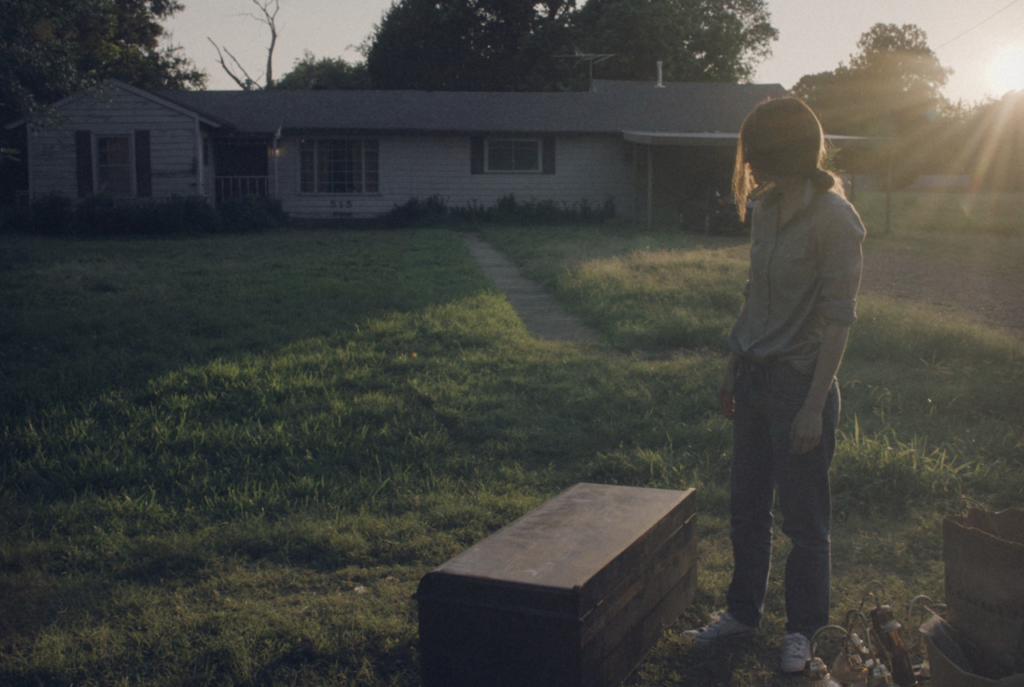
The haunted house of David Lowery’s A GHOST STORY.
The homes of the respective characters are special – if only to them. When Maud (Sally Hawkins) arrives at her small dusty and dingy poverty hovel occupied heretofore only by Ethan Hawkes’ surly man of few words, Everett Lewis, there’s no attachment whatsoever. She’s there to do a job, to be a live-in maid. Extremely limited sleeping arrangements being what they are, however, lead to a quick if unconventional marriage somewhat of convenience. Maud’s cooking and home-keeping skills are not as advertised, and before marrying, she has ample reason and opportunity to depart. The trouble is, she’s got nowhere else to go.
As paintbrush and house paint present themselves, she can’t help herself – the artist within begins to emerge. Before long, she’s painting the indoor walls and windows. She’s painting the backsides of her husband’s fish peddling invoices. These small colorful cards become popular in the community. Slowly but surely, Maud gathers fame for her artwork. As perplexing as this is to Everett, he goes along with it. After all, as it turns out, there’s money here. And maybe, just maybe, we see that he sees a little bit of what we see in her and her work. The house itself is eventually painted surface to surface with her vibrant renderings. It is a beautiful place, although still very much the tiny shack it began as.
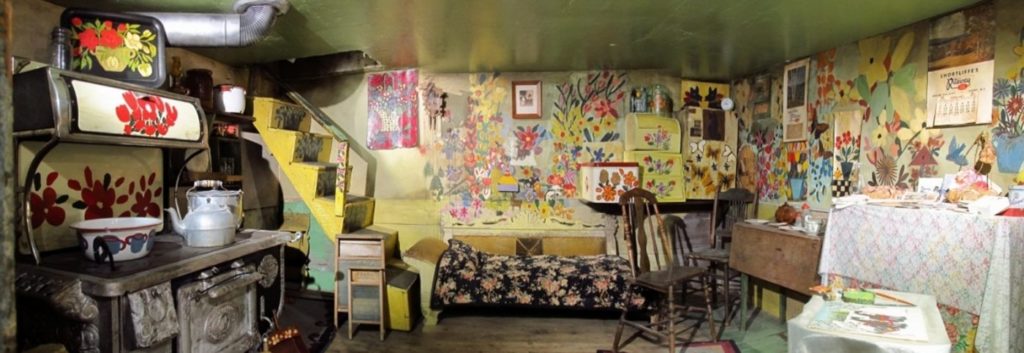
Maud Lewis’ fantastically painted hovel in MAUDIE.
Upon leaving the film, I wondered whatever became of the place. Is it still there? I had to check. The answer is, yes. Sort of. When the house fell into disrepair following Everett’s death, members of the community came together to preserve it. The home was removed from its singular plot, and taken to a museum in Nova Scotia. There it remains as a permanent exhibit. Meanwhile, near the actual plot, a replica memorial has been erected. Though never celebrated in her life in any grand way, Maud Lewis is, in death, memorialized.
The single-story outer-suburban ranch home of Casey Affleck and Rooney Mara, characters identified only in the credits as “C” and “M”, is, likewise, nothing special. It’s not made special, per se, the way that Maud Lewis’ house is. Yet, even in life, we learn that “C” has an affection for the place. He somehow senses the history, the past and present of it all. He cannot know that it’s he himself he’s sensing, his future apparition long since unstuck in time.

The home of “C” and “M” in A GHOST STORY.
Although never articulated, A Ghost Story communicates that the longer an Earthbound spirit lingers, the less temporal it becomes. Yet, the place still matters. Memory of why it matters fades, yet… it matters. The point has something to do with life. The execution has something to do with cinema.
In her fine write-up for the July/August issue of Film Comment, Imogen Sara Smith says, “The notion that during our lives we might be haunted by our future ghosts is a brain twister. But if the film wanders into less than fully baked speculations, the blame might lie with cinema itself, which turns time into putty.” So very true. While the odd and random time-hops director David Lowery eventually gets to taking with A Ghost Story are as compelling as they are confusing, they are merely an in-keeping formal leap for the medium itself. When a character in any movie parks a car one moment, then in the time of a straight cut edit, walks into a room, time is being transversed. It’s something in us that both fills in the gap and legitimizes the jump, all in one fell swoop.
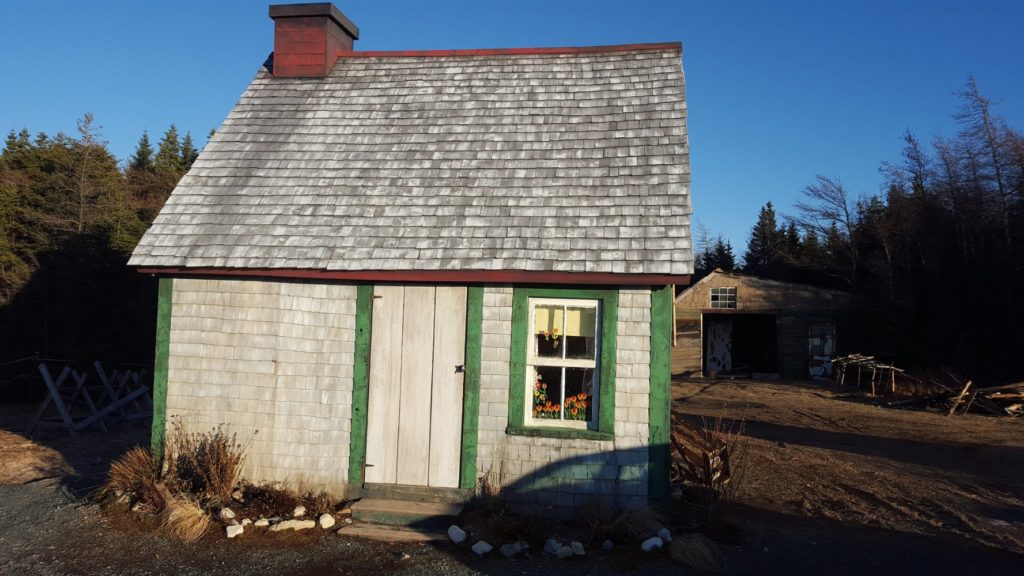
The Lewis home in MAUDIE.
Even weeks after seeing them, both films continue to resonate. Maudie is a fine film. A Ghost Story is a remarkable film. The former is, in the best sense possible, “the good version” of exactly what one would expect when heading in for such a work of historical fiction: venerating, charming, rustic, a little whimsical, and not too challenging. It’s a fine, competent performance-driven work that wonderfully allows Hawkins to shine (as we’ve come to expect) and Hawke to truly breakout into new territory, away from his rut of either playing stale variations on his Richard Linklater Before trilogy persona, or slumming it in genre vehicles.
A Ghost Story, it could be said, begins where Maudie concludes. As Everett wanders out into the daylight, internally mourning the passing of the woman he finally learned to love if never understand, his sad look of loss wordlessly enunciates all he’s grappling with. “…What now…?” Having spent two hours getting to know her, and watching their relationship evolve, we are right there with him. Just as he has come around to loving her, we have come around to empathy for him. All without even knowing it.
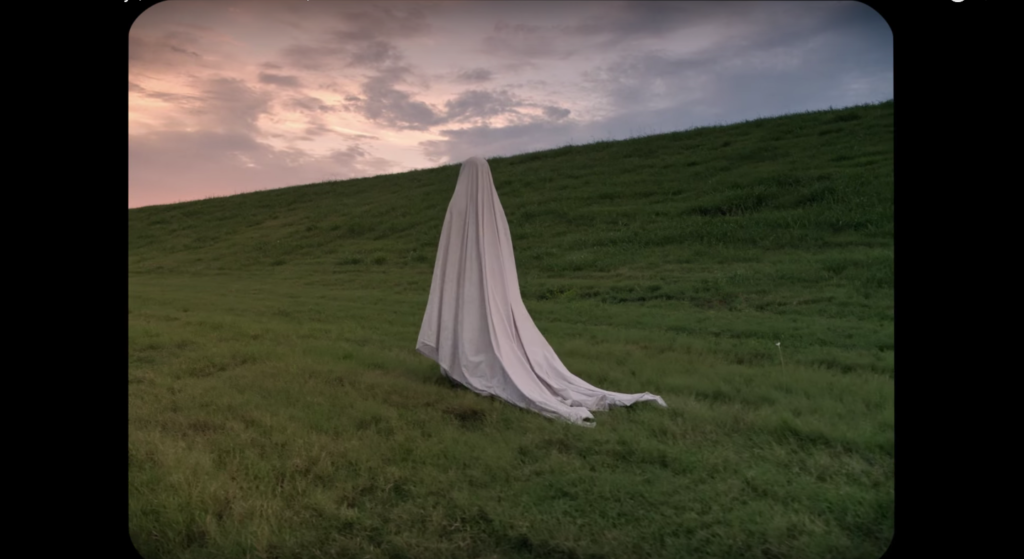 A Ghost Story, as one might expect, begins with death. As the camera finds “C” dead at the wheel of his car, the victim of an accident just beyond his own driveway, any such feelings of loss on our behalf are considerably more scarce. In the fleeting moments we’re given to spend with Affleck’s character before he becomes a Charlie Brown-style bedsheet apparition, he isn’t molded as anyone necessarily warm or endearing. It’s only through the grieving of Rooney Mara’s character – something we at times join her for in real time – that we are let in on the impact of the loss of this man. The difference is, once “M” walks out the door into her Great What Now?, we do not follow her, and we never see her again. She moves on.
A Ghost Story, as one might expect, begins with death. As the camera finds “C” dead at the wheel of his car, the victim of an accident just beyond his own driveway, any such feelings of loss on our behalf are considerably more scarce. In the fleeting moments we’re given to spend with Affleck’s character before he becomes a Charlie Brown-style bedsheet apparition, he isn’t molded as anyone necessarily warm or endearing. It’s only through the grieving of Rooney Mara’s character – something we at times join her for in real time – that we are let in on the impact of the loss of this man. The difference is, once “M” walks out the door into her Great What Now?, we do not follow her, and we never see her again. She moves on.
He, however, cannot. Having refused his gateway to the afterlife, he is now doomed to remain physically where he is. At least, that seems to be the case. No rules of being a ghost are ever given, and the only other ghost he meets is far too far around the bend of reason. (This neighbor ghost is “waiting for someone”, though he/she can’t, at this point, recall whom or why). “C”, like “M”, is clearly also mourning something, something that is impossible to get back. Thus we have the central tragedy of Lowery’s film. The zigs and swerves it takes into nihilism, not dissimilar to Lars Von Trier’s Melancholia, cannot be dismissed as empty, pretentious existential handwringing, on account of it‘s about something painfully internal. Eventually, the house is unceremoniously bulldozed. This sort of thing never happened to Maud Lewis. Quite the opposite.
With that, we reach the inevitable point of divergence. No comparison/contrast can go on forever. Neither can ghosts, as it turns out. But art, on the other hand… Art can last and last – long beyond the artist leaving the building. It’s not the physical structure after all. It’s what we put in it, or failed to put in it. From there, both Maudie and A Ghost Story tell us that relationships are not simple nor intuitive, that artistic talent is malleable, and that loss is inevitable.

